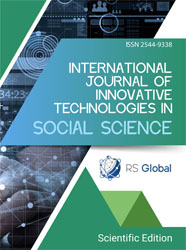СОЦИАЛЬНОЕ ПОЛОЖЕНИЕ СЕЛЬСКОГО НАСЕЛЕНИЯ КАРАКАЛПАКСТАНА В ПОСЛЕВОЕННЫЙ ПЕРИОД
Abstract
The article examines some aspects of the social situation of dehkans in the postwar period in Karakalpakstan. During this period, the state takes a number of decisions to increase cotton crops at the expense of grain crops and reduce the homesteads of the rural population. The main source of income of collective farmers was a subsidiary farm, where the main food products were grown. Decline in prices for a number of food and non-food products during 1947-1950. However, food was still unavailable to most, often the shelves of aul shops were empty: some were sold, some were distributed among the executives. Strict control and administration, unfair distribution of goods of mass consumption has led to economic sabotage and migration of the rural population. Collective farmers often opposed administration, but mostly preferred hidden, latent forms of struggle for their own interests, avoiding direct confrontation with the leadership of the collective farm.
References
Нуржанов С., Дошниязов Ж. Социально-духовное состояние общества Каракалпакстана в 1960-1980-е годы.// Вестник Каракалпакского отделения Академии наук Республики Узбекистан. 2011. No4.
Закон «О пятилетнем плане восстановления и развития народного хозяйства Каракалпакской АССР на 1946-1950 гг.». – Н., 1946. – C. 5.
Каракалпакстан жана тарийхы. – Н., 2003. – C. 285.
ЦГА РК, ф.1, оп.8, д.430, л.9; ф. Р-322, оп.1, д.1994, л.16.
ЦГА РК, ф. Р-322, оп.1, д.1995, л.5.
Кызыл Каракалпакстан, 1946, 15 июль.
ЦГА РК, ф. Р-322, оп.1, д.1693, л.68, л.98; ф.1, оп.9, д.256, л.62.
ЦГА РК, ф. Р-229, оп.1, д.898, л.1.
Полевые записи автора за 2019 год.
История Каракалпакской АССР. Том второй. – Т., 1974. – С. 275.
ЦГА РК, ф.1.оп.6, д.756, л.129.
Views:
410
Downloads:
330
Copyright (c) 2019 The author

This work is licensed under a Creative Commons Attribution 4.0 International License.
All articles are published in open-access and licensed under a Creative Commons Attribution 4.0 International License (CC BY 4.0). Hence, authors retain copyright to the content of the articles.
CC BY 4.0 License allows content to be copied, adapted, displayed, distributed, re-published or otherwise re-used for any purpose including for adaptation and commercial use provided the content is attributed.











